Abstract
1. Anaesthetized dogs were given aerosols of 5-hydroxytryptamine (5-HT), histamine and acetylcholine; the effects on the changes in total lung resistance (RL) and dynamic lung compliance (Cdyn) produced by electrical stimulation of the peripheral cervical vagi, and I.V. histamine and acetylcholine were studied. 2. Pretreatment with 5-HT significantly potentiated the increases in RL caused by vagal stimulation, histamine or acetylcholine. Pretreatment with histamine significantly potentiated the increases in RL caused by vagal stimulation but the potentiation of the increases in RL produced by histamine and acetylcholine were not significant. Pretreatment with acetylcholine did not potentiate the increases in RL due to vagal stimulation, histamine or acetylcholine. The falls in Cdyn produced by vagal stimulation, histamine or acetylcholine were not potentiated by pretreatment with aerosols of 5-HT, histamine or acetylcholine. 3. The effects of I.V. histamine, 5-HT and acetylcholine on RL and Cdyn were studied when given alone and when combined with vagal stimulation. 4. Vagal stimulation significantly potentiated the increases in RL due to 5-HT and histamine, but did not affect the increases in RL caused by acetylcholine or the falls in Cdyn produced by any of the three agonists. 5. By comparing these results with those from a previous study, it is concluded that, for the three agents studied, in order for increased irritant receptor discharge to reflexly increase RL, the agent has to increase the reactivity of the airway to vagal stimulation. It is also concluded that the degree of vagally mediated broncho-constriction can be varied by changing either the afferent limb through a change in irritant receptor discharge, or the efferent limb, by a change in airway reactivity.
Full text
PDF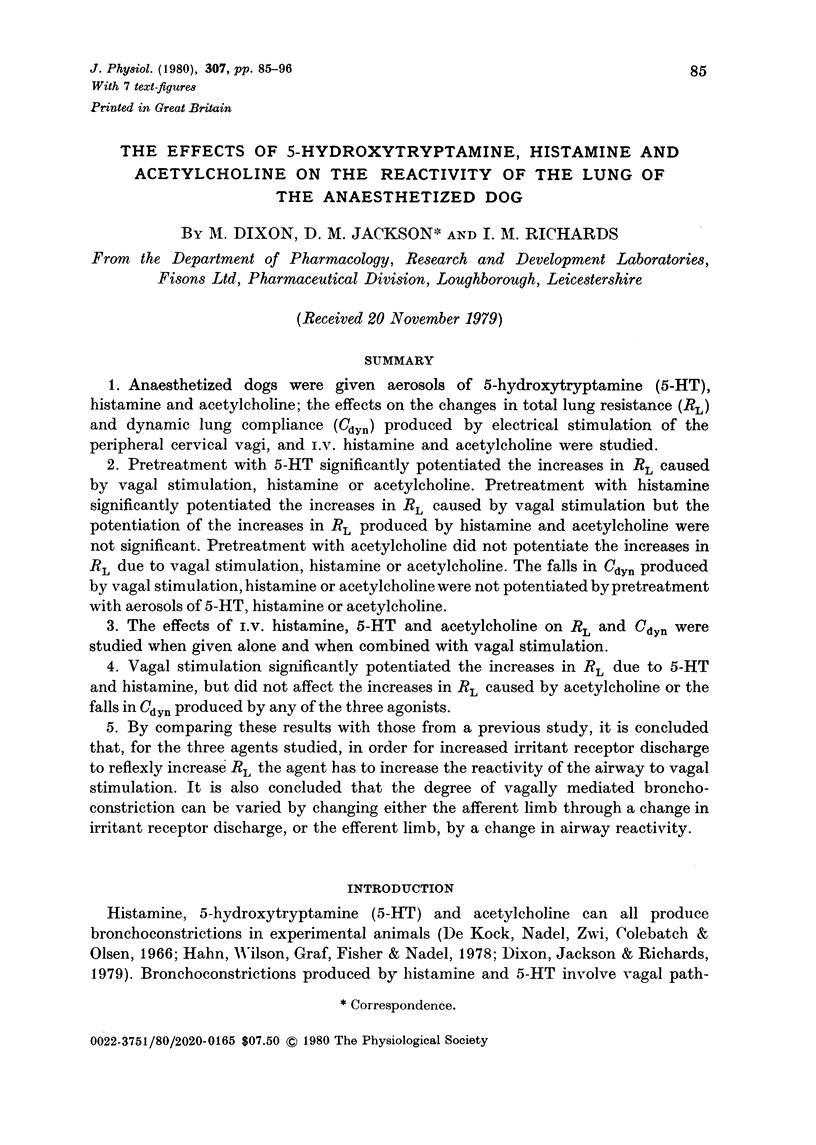
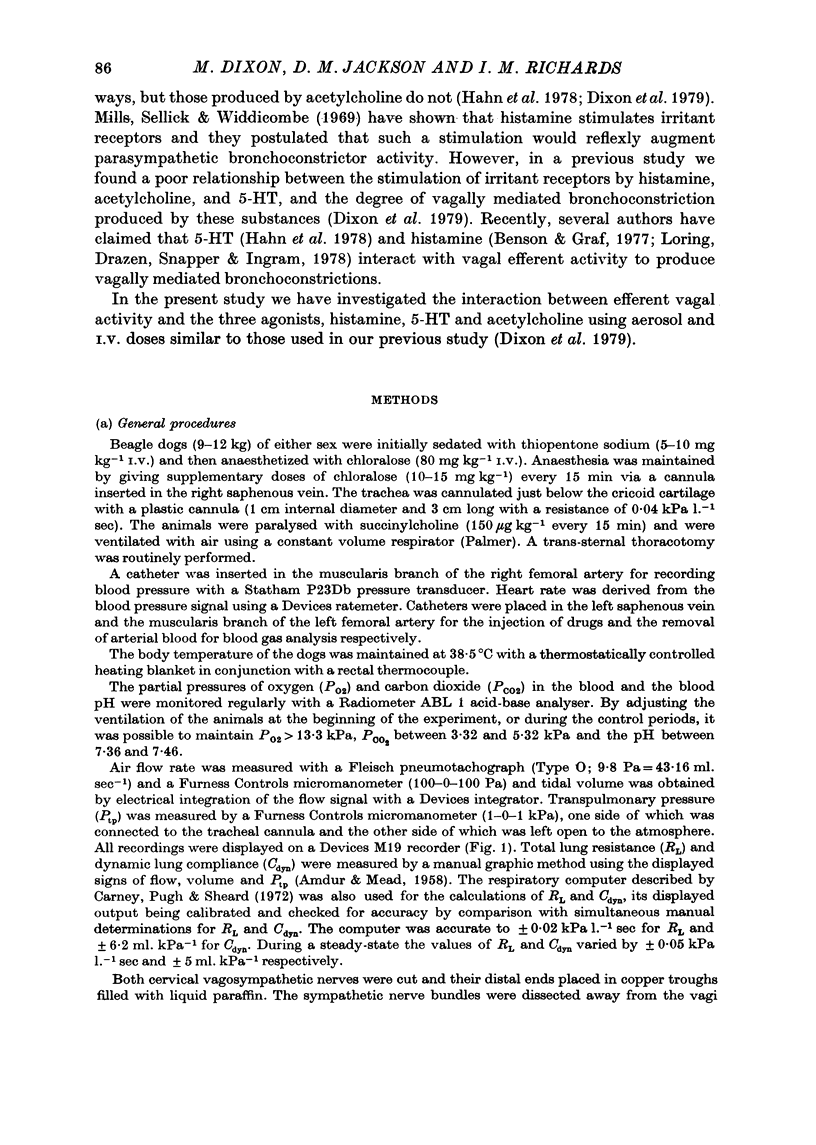
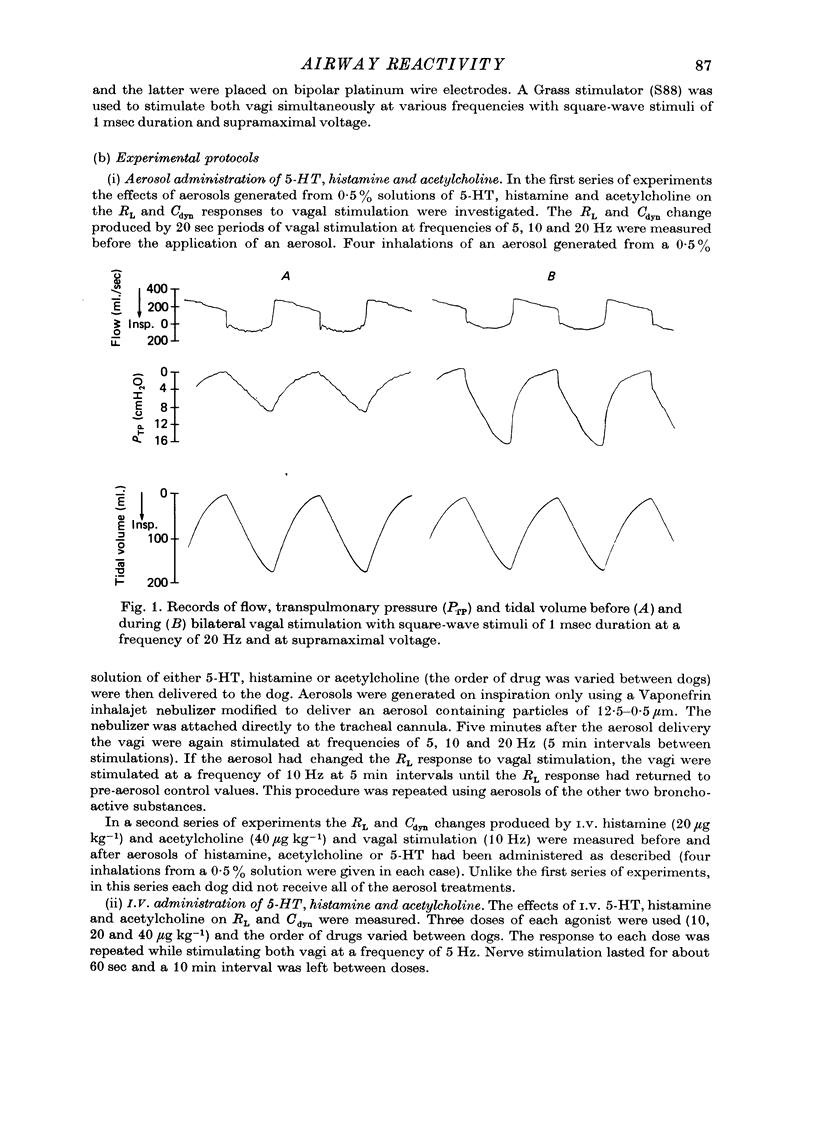
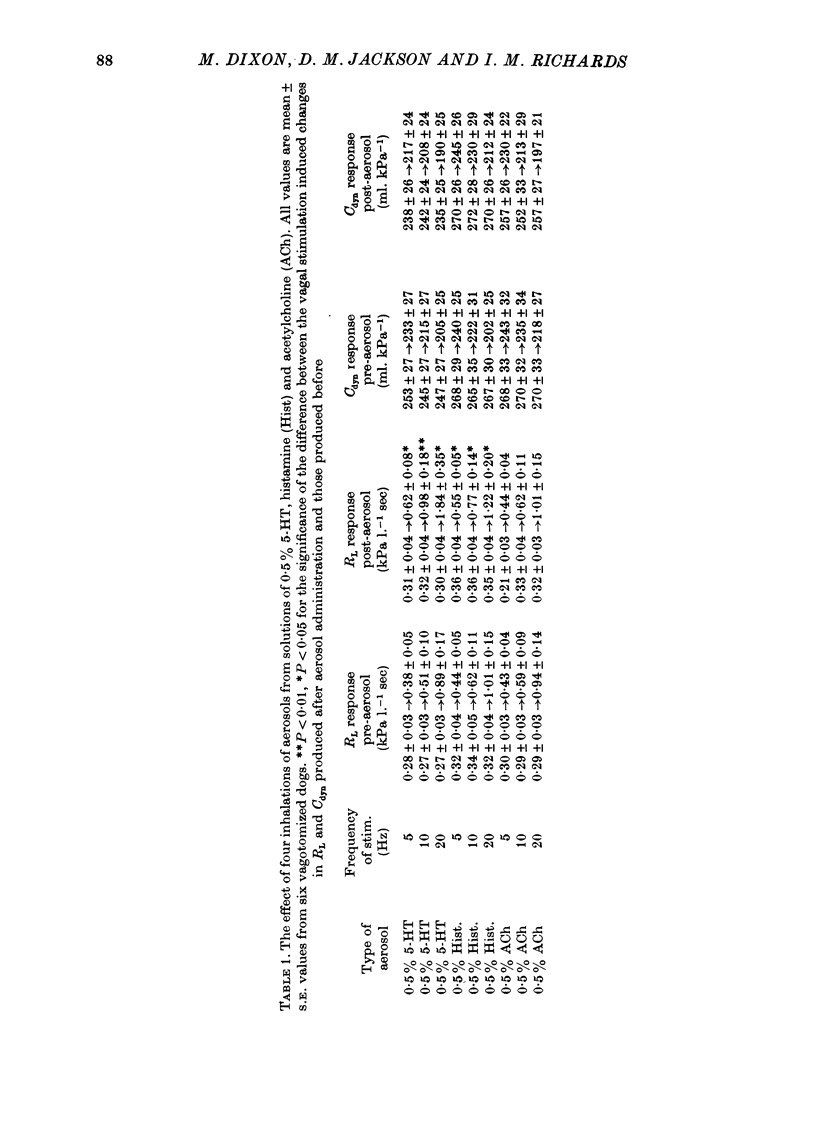
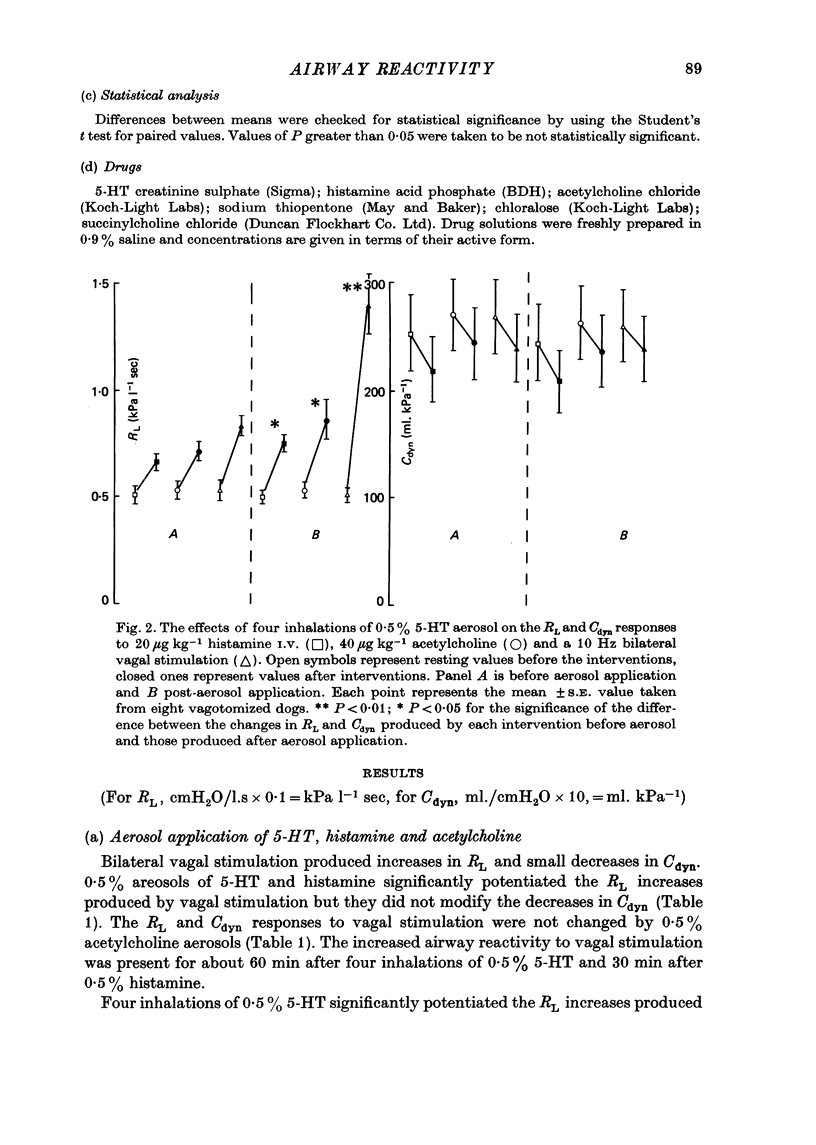
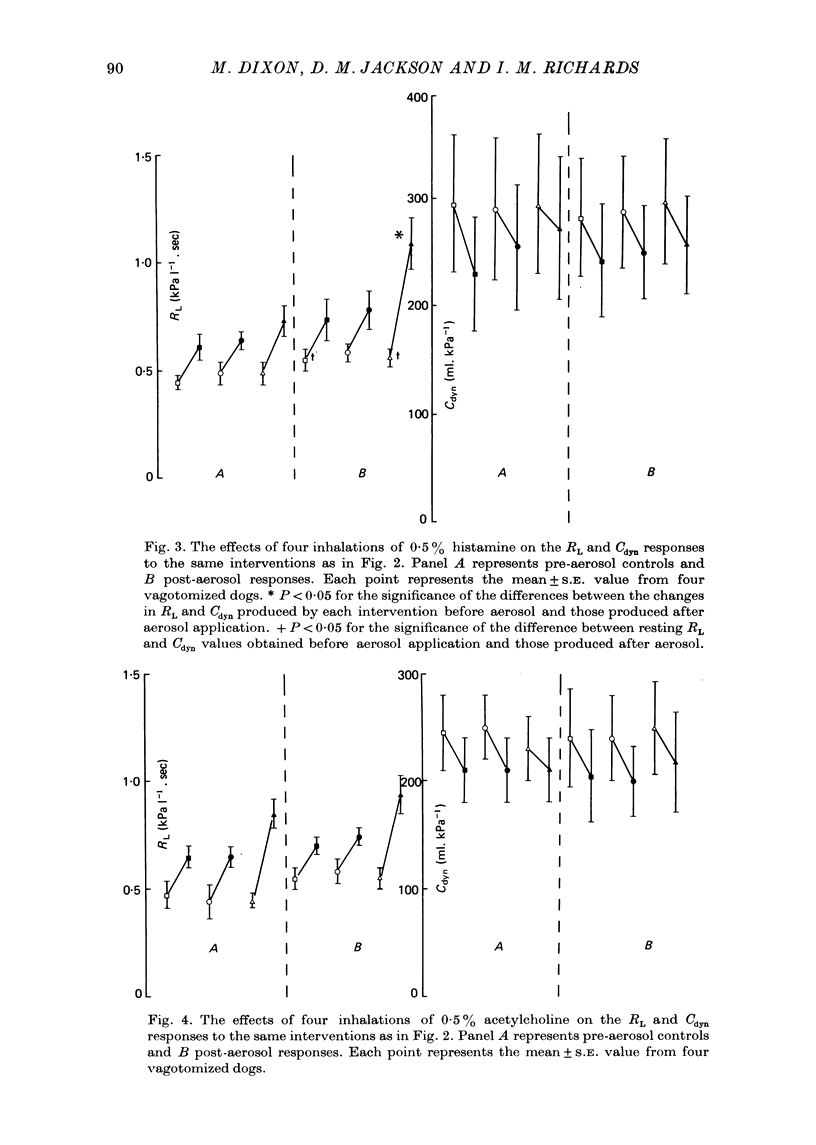
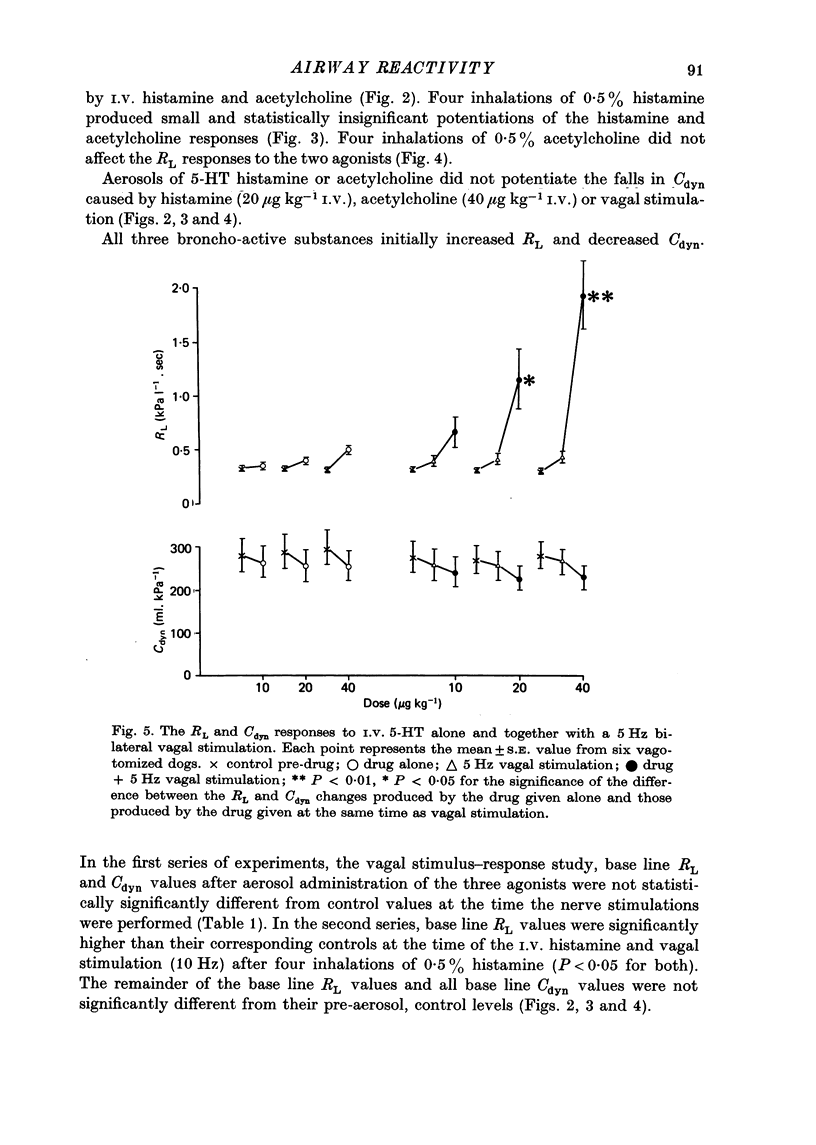
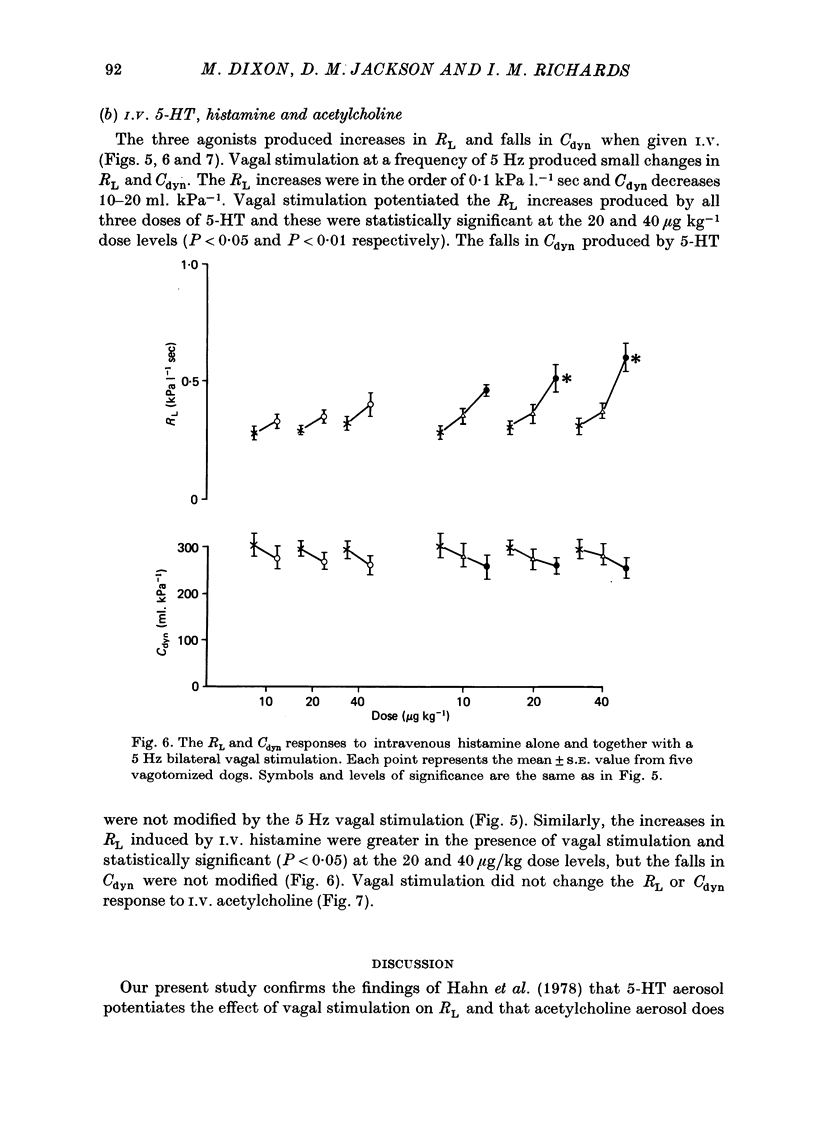
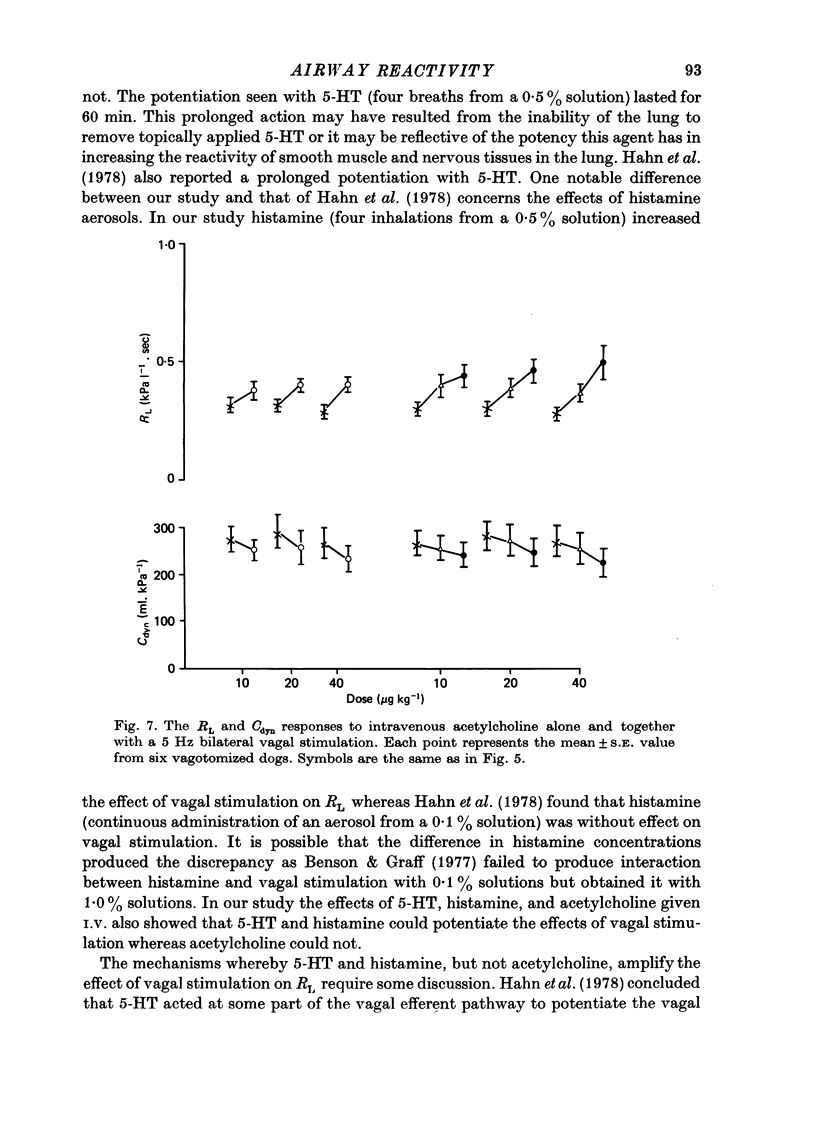
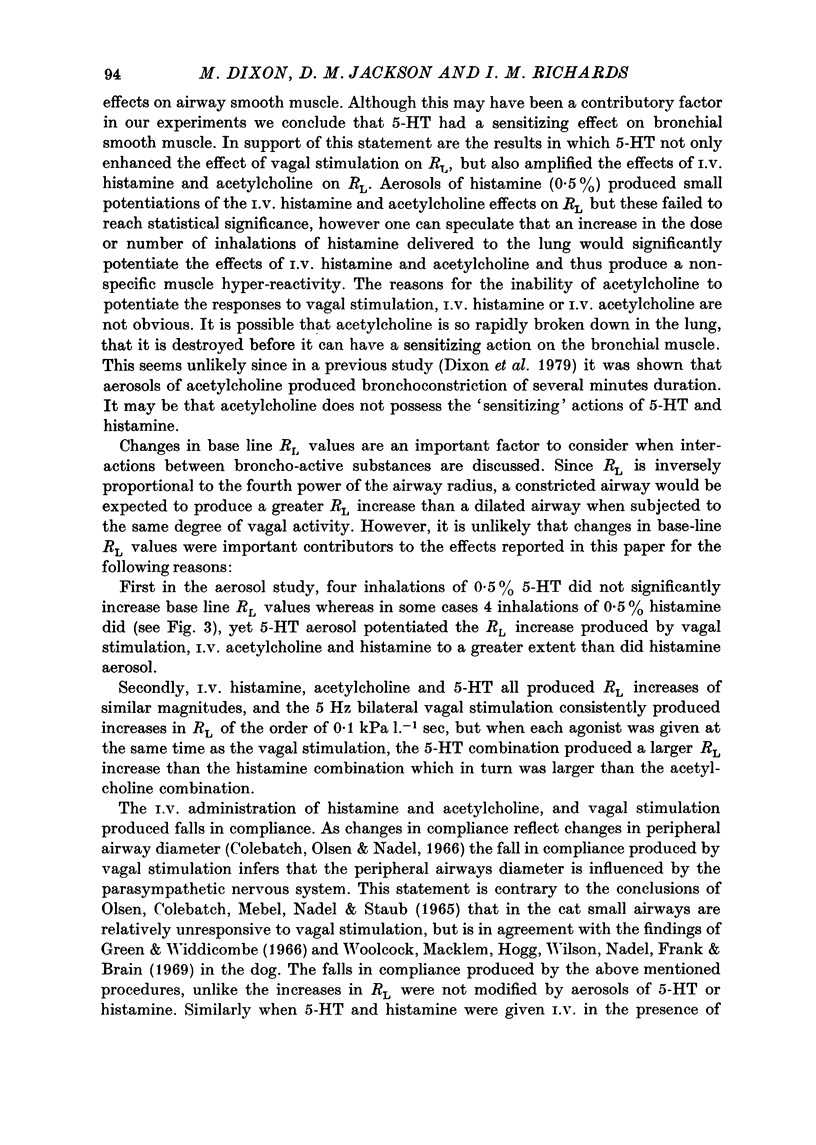
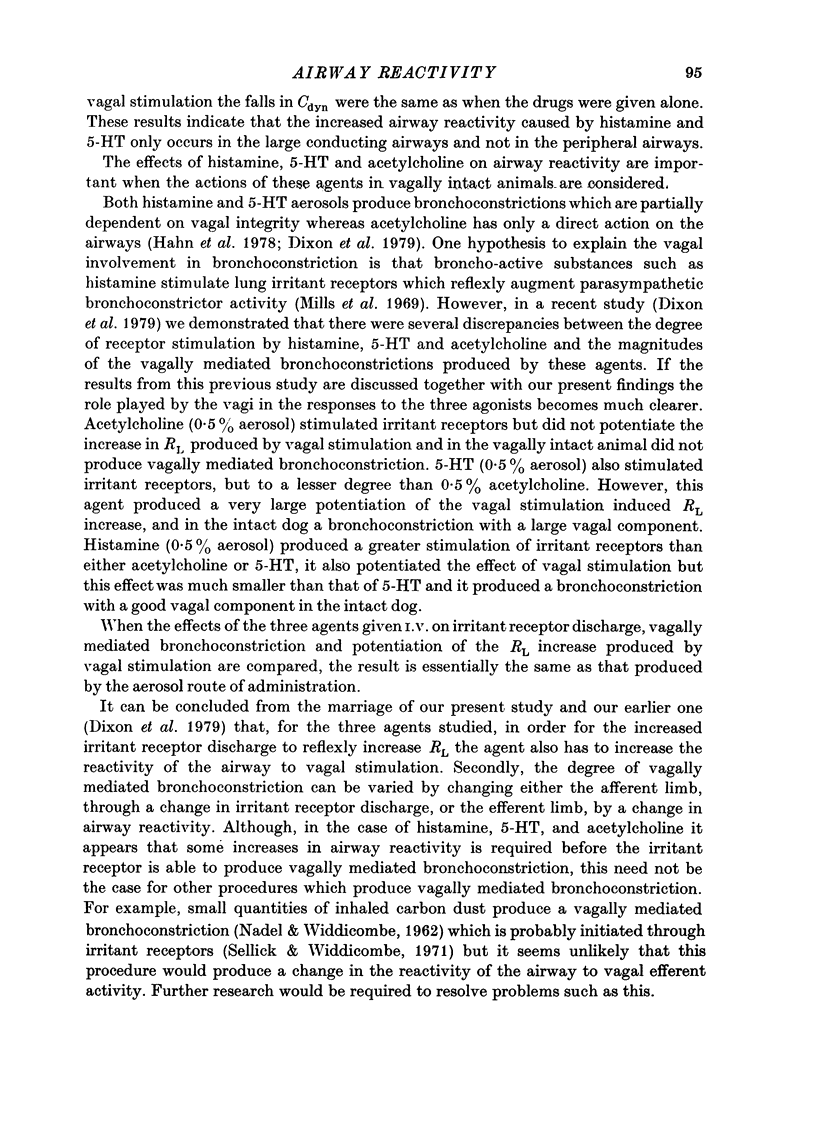
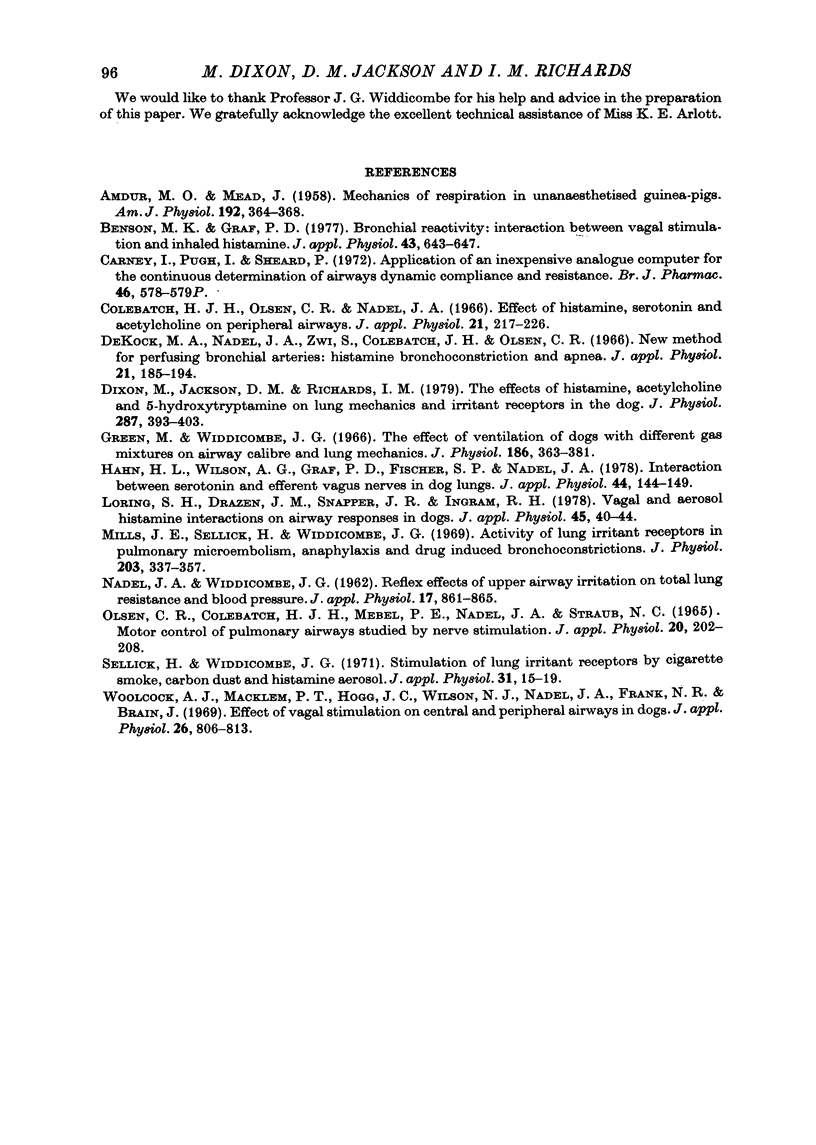
Selected References
These references are in PubMed. This may not be the complete list of references from this article.
- AMDUR M. O., MEAD J. Mechanics of respiration in unanesthetized guinea pigs. Am J Physiol. 1958 Feb;192(2):364–368. doi: 10.1152/ajplegacy.1958.192.2.364. [DOI] [PubMed] [Google Scholar]
- Benson M. K., Graf P. D. Bronchial reactivity: interaction between vagal stimulation and inhaled histamine. J Appl Physiol Respir Environ Exerc Physiol. 1977 Oct;43(4):643–647. doi: 10.1152/jappl.1977.43.4.643. [DOI] [PubMed] [Google Scholar]
- Carney I., Pugh I., Sheard P. Application of an inexpensive analogue computer for the continuous determination of airways dynamic compliance and resistance. Br J Pharmacol. 1972 Nov;46(3):578P–579P. [PMC free article] [PubMed] [Google Scholar]
- Colebatch H. J., Olsen C. R., Nadel J. A. Effect of histamine, serotonin, and acetylcholine on the peripheral airways. J Appl Physiol. 1966 Jan;21(1):217–226. doi: 10.1152/jappl.1966.21.1.217. [DOI] [PubMed] [Google Scholar]
- DeKock M. A., Nadel J. A., Zwi S., Colebatch H. J., Olsen C. R. New method for perfusing bronchial arteries: histamine bronchoconstriction and apnea. J Appl Physiol. 1966 Jan;21(1):185–194. doi: 10.1152/jappl.1966.21.1.185. [DOI] [PubMed] [Google Scholar]
- Dixon M., Jackson D. M., Richards I. M. The effects of histamine, acetylcholine and 5-hydroxytryptamine on lung mechanics and irritant receptors in the dog. J Physiol. 1979 Feb;287:393–403. doi: 10.1113/jphysiol.1979.sp012666. [DOI] [PMC free article] [PubMed] [Google Scholar]
- Green M., Widdicombe J. G. The effects of ventilation of dogs with different gas mixtures on airway calibre and lung mechanics. J Physiol. 1966 Oct;186(2):363–381. doi: 10.1113/jphysiol.1966.sp008040. [DOI] [PMC free article] [PubMed] [Google Scholar]
- Hahn H. L., Wilson A. G., Graf P. D., Fischer S. P., Nadel J. A. Interaction between serotonin and efferent vagus nerves in dog lungs. J Appl Physiol Respir Environ Exerc Physiol. 1978 Feb;44(2):144–149. doi: 10.1152/jappl.1978.44.2.144. [DOI] [PubMed] [Google Scholar]
- Loring S. H., Drazen J. M., Snapper J. R., Ingram R. H., Jr Vagal and aerosol histamine interactions on airway responses in dogs. J Appl Physiol Respir Environ Exerc Physiol. 1978 Jul;45(1):40–44. doi: 10.1152/jappl.1978.45.1.40. [DOI] [PubMed] [Google Scholar]
- Mills J. E., Sellick H., Widdicombe J. G. Activity of lung irritant receptors in pulmonary microembolism, anaphylaxis and drug-induced bronchoconstrictions. J Physiol. 1969 Aug;203(2):337–357. doi: 10.1113/jphysiol.1969.sp008867. [DOI] [PMC free article] [PubMed] [Google Scholar]
- NADEL J. A., WIDDICOMBE J. G. Reflex effects of upper airway irritation on total lung resistance and blood pressure. J Appl Physiol. 1962 Nov;17:861–865. doi: 10.1152/jappl.1962.17.6.861. [DOI] [PubMed] [Google Scholar]
- Sellick H., Widdicombe J. G. Stimulation of lung irritant receptors by cigarette smoke, carbon dust, and histamine aerosol. J Appl Physiol. 1971 Jul;31(1):15–19. doi: 10.1152/jappl.1971.31.1.15. [DOI] [PubMed] [Google Scholar]
- Woolcock A. J., Macklem P. T., Hogg J. C., Wilson N. J., Nadel J. A., Frank N. R., Brain J. Effect of vagal stimulation on central and peripheral airways in dogs. J Appl Physiol. 1969 Jun;26(6):806–813. doi: 10.1152/jappl.1969.26.6.806. [DOI] [PubMed] [Google Scholar]


